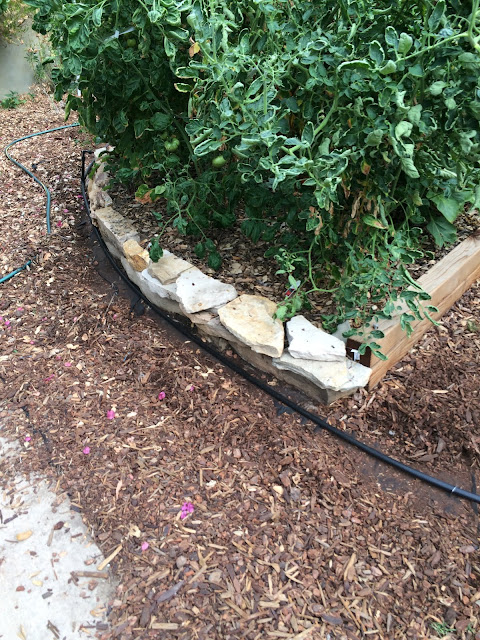Eggplants are very intense. The flowers are tough little things full of thorns. The eggplants themselves seem indestructible, dark purple, the shiniest thing that ever sprang out of a garden. When you harvest them, be cautious; those beauties bite back. The stems are full of thorns.
And when they come, boy do they come! And you better know what to do with them. So here is my recipe for Baba Ganoush (or eggplant dish, which is probably what Baba Ganoush means in Arabic).
 |
| Don't let the eggplant flower fool you into picking it. It has teeth in back; Very Little Shop of Horrors. |
 |
| Eggplants are naturally shiny when ripe. As soon as they shine and are deep purple they are ready to harvest no matter the size. |
 |
| Eggplants are surprisingly pest-resistant and grow late into the fall in Southern California. |

BABA Frigging-GANOUSH!
In France we call this "caviar d'aubergine' Or eggplant caviar. Yum!
1- Put the eegplant in an oven at 350 degrees. Do not pierce the skin or remove the stem. Cook until completely soft, about 45 minutes. Some people wrap them in foil but I don't see what that does beside add aluminum to your blood-stream and the landfill.
2- Let it cool enough to handle without pain.
3- Without burning yourself, the eggplant, or the house, put the eggplant directly on the gas stove without a pan. Let the flame lick it all over until the skin is died and burned in places. This is the essential step that will give your Baba Ganoush that complex smoky flavor. No need to carbonize it. A little flame is all it takes.
4- Scrape off all traces of skin or scoop out the flesh.
5- Using a fork crush it all to a puree. I think the blender makes it all too smooth. I like it chunky.
6- Add: juice of 1 lemon (no pits), 2 tablespoons of Tahini, 1 Crushed garlic clove (no skin) and about 1/2 cup olive oil per large eggplant. Add salt, pepper and a dash of cumin to taste. That's it!






















































